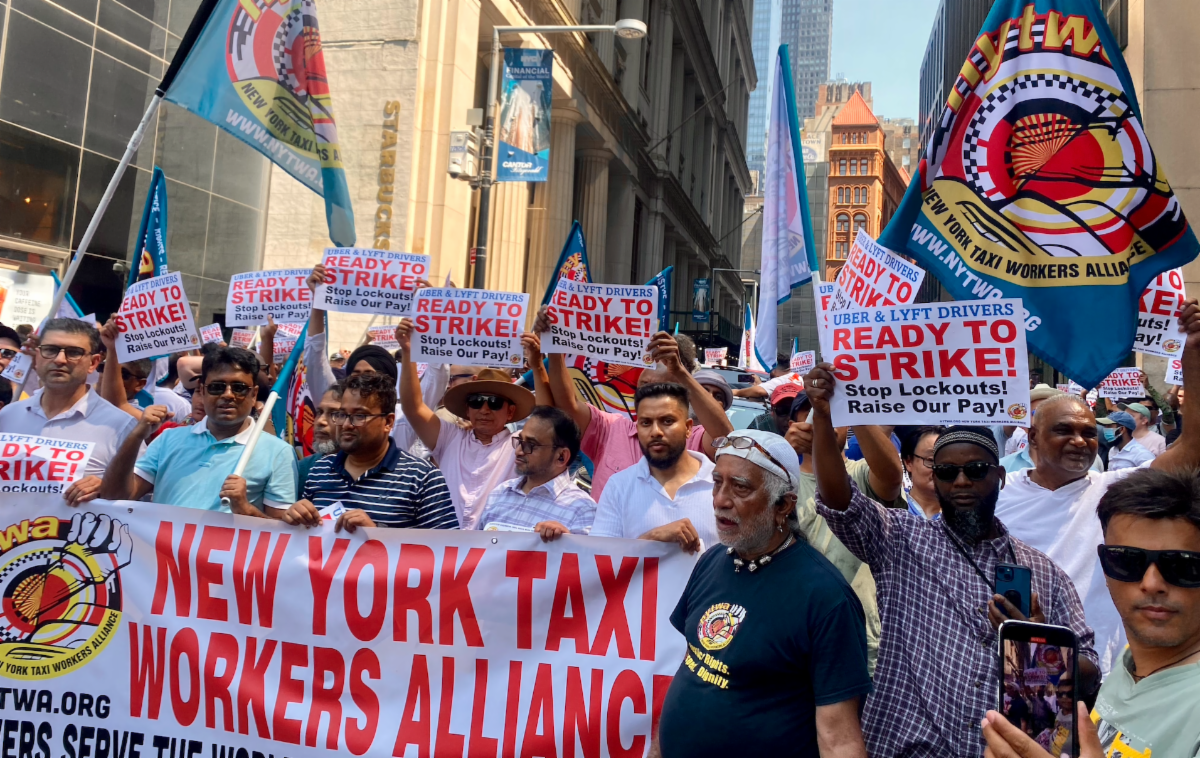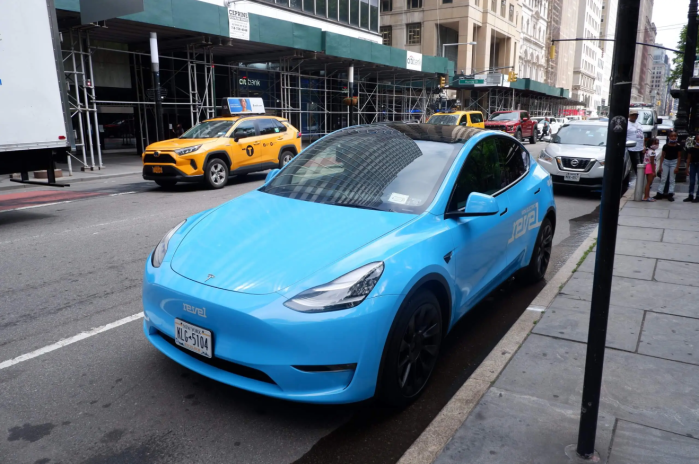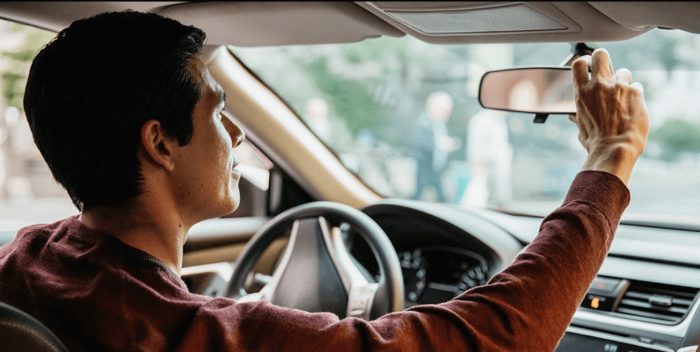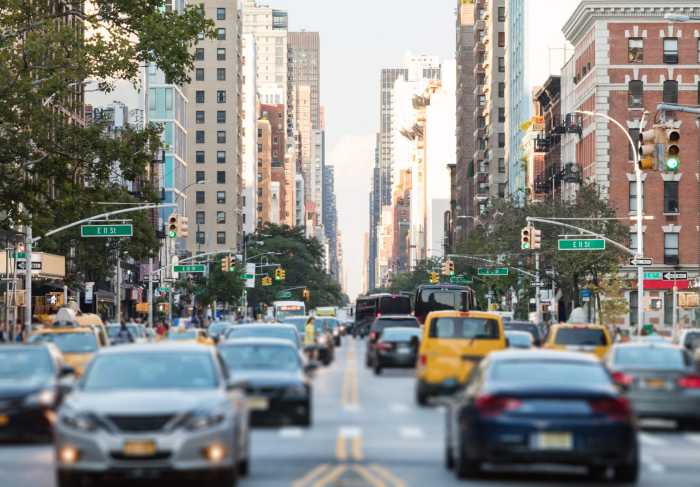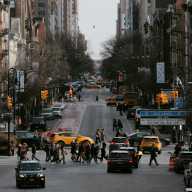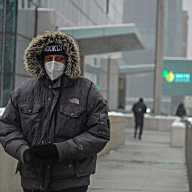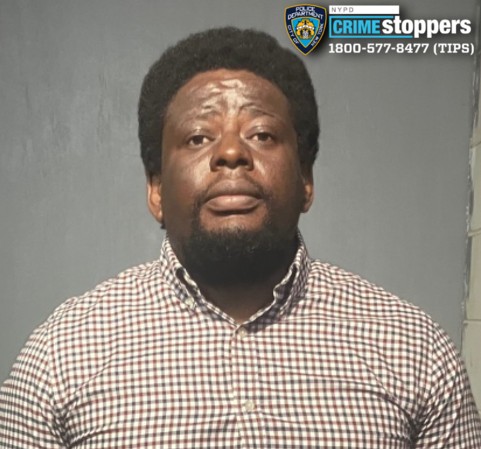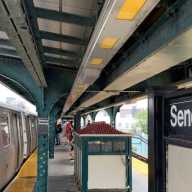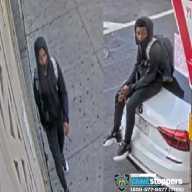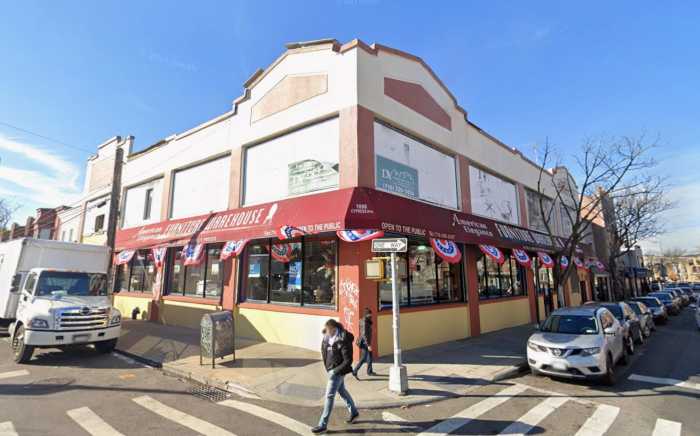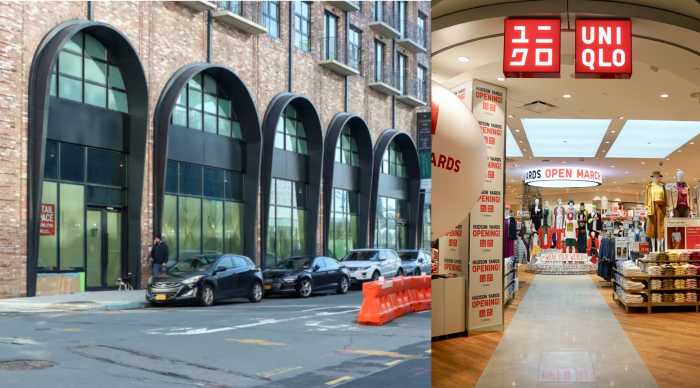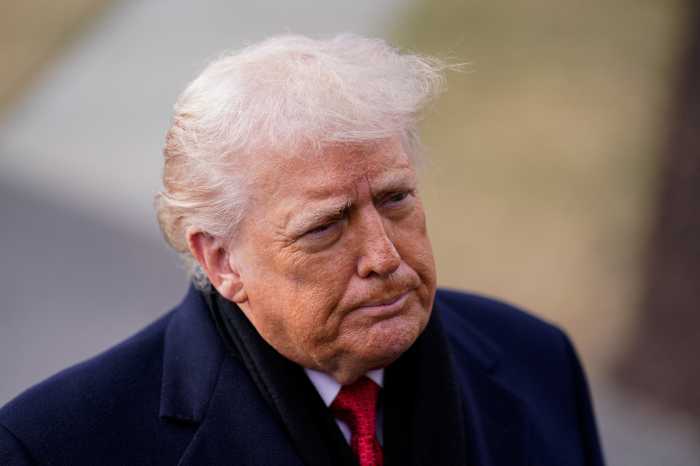New York City Uber and Lyft drivers are threatening a strike over a months-long pattern of “lockouts” from the rideshare giants’ apps, plus antitrust litigation over a city-brokered deal to stop them that drivers say doesn’t go far enough.
The New York Taxi Workers Alliance (NYTWA), a union repping over 20,000 cabbies and rideshare drivers, is planning a march on City Hall next week, where the group says it will “give notice” that drivers will go on strike unless regulatory action is taken to curb the lockouts that have kept many drivers from being able to access the rideshare apps, and by extension earn a living.
Bhairavi Desai, the longtime leader of NYTWA, told amNewYork Metro the logistics of the potential strike have not been fully worked out, but drivers are signing pledges to commit to the strike — which would be at least 24 hours long across the five boroughs.
The union also alleges that the city and the two rideshare giants illegally colluded when brokering a “backroom” deal last month aimed at reducing and ultimately eliminating the lockouts, which NYTWA claims is nonbinding and doesn’t go far enough. They even say it could be a violation of antitrust law in a letter they plan to send to City Hall on Friday.
“This agreement is a plain violation of black-letter antitrust law, which prohibits companies colluding over wages and suppressing labor outputs,” NYTWA’s lawyers write to City Hall in their letter.
Lockout issues
Uber and Lyft have been effectively locking out scores of drivers from accessing the apps for months, which the companies say is a bid to comply with rules from the Taxi & Limousine Commission requiring a “utilization rate” (UR) of 53%. The UR is the ratio between the amount of time a driver is transporting a passenger versus their total amount of time online.
It’s a metric unique to New York City, developed as part of its nation-leading minimum pay standards for rideshare drivers. This ensures that drivers are paid for all the time they’re online while still regularly picking up fares.
The problems began, NYTWA says, when the city lifted its longstanding cap last year on e-hail vehicles, which was stopped by a judge following a union lawsuit but only after thousands of new drivers using electric cars had been onboarded.
When the presence of so many new drivers caused the UR to dwindle, Uber responded by beginning to lock drivers out of the app this year, which NYTWA claims is a manipulative tactic to keep the UR artificially high while “devastating” low-income drivers.
“It could be the middle of your shift, it could be the beginning of your shift, the companies will send a message to you on the app that you’ve been taken offline,” Desai told amNewYork Metro. “You’re no longer eligible to be on the app or be on line for the next dispatch.”
“The reason they’re doing this is that goes back to the TLC pay rule,” she continued. “They essentially want to evade the regulation that would require them to pay drivers for all the hours that drivers are working.”
After months of Uber locking drivers out, Lyft began to do the same, said Desai.
By the end of July, following protests by drivers and the threat of tighter regulations by the TLC, the city brokered an agreement with the rideshare companies aimed at making lockouts a thing of the past. But Uber and Lyft do not have to meet the same terms under the deal: Uber agreed to wind down lockouts after Labor Day on the condition that Lyft, its smaller competitor, increase its UR beyond 50%. Both companies agreed to pause the onboarding of new drivers.
Desai says that the terms — in a deal NYTWA wasn’t party to — would actually require Lyft to increase its driver lockouts.
“Uber said in the month of August it would decrease lockouts, which we’ve seen no evidence of, and that after Sept. 3, it would look to end lockouts,” said Desai. “But it’s contingent on Lyft increasing its utilization rate. Now Lyft can only do that one of two ways: either Lyft engages in lockouts to manipulate the utilization rate in the same way that Uber has, or if Lyft miraculously, overnight, increases its ridership, or has massive layoffs of the drivers.”

Uber’s UR this year is 54.9% while Lyft’s is 48.1%, according to metrics published by the TLC.
NYTWA’s preferred solution is a city regulation with teeth prohibiting the lockout practice rather than a handshake deal.
“We want regulations that are going to put a permanent end to the threat of lockouts,” said Desai. “We want the TLC to reject the manipulated numbers that Uber has provided them on how busy the drivers have been, so the TLC can reset the pay rate and drivers are paid for all the time that they’re working as they were promised.”
Explaining the lockouts
The TLC has defended the deal as necessary to halt lockouts as soon as possible without going through a lengthy rulemaking process, but Commissioner David Do says the agency is still prepared to introduce new regulations if necessary.
“Our priority is to provide relief to the city’s drivers as quickly as possible, without having to go through a lengthy and likely contentious rulemaking process that could prolong their suffering. This deal is the shortest possible path towards that relief,” said Do. “At the same time, we have prepared a robust rule package designed to disincentivize access restrictions, and we are absolutely prepared to introduce that should it become necessary.”
The TLC did not immediately return an inquiry on the antitrust allegations.
Both Uber and Lyft lobbied heavily against the city’s minimum pay rules established in 2019, and spokespersons for both companies called for modifications to the pay structures when reached by amNewYork Metro.
Uber spokesperson Josh Gold said the company doesn’t expect that Lyft will meet the mark on the 50% UR rate, and previously noted that would leave the company without “other options” but to continue lockouts.
“The city’s rule bizarrely holds Uber responsible for Lyft’s failures,” said Gold, who declined to comment on the antitrust allegation. “With Lyft struggling to keep drivers busy, we don’t have other options.”
Lyft said the lockouts are necessary to prevent its rides from becoming a “luxury service.”
“We believe the city’s driver pay formula is broken, and no other city uses such a convoluted system,” said Lyft spokesperson CJ Macklin. “Today, NYC drivers make more per hour when logged on the Lyft platform than in any other city, even without tips and bonuses, but the pay formula is turning rideshare into a luxury only the most wealthy can afford, all while forcing us to limit driver flexibility. Instead of sticking with a flawed system, we need to recognize its issues and fix them.”
Lyft also declined to comment on the antitrust allegations.
Read more: Staten Island Ferry Workers Get Contract After 13 Years



